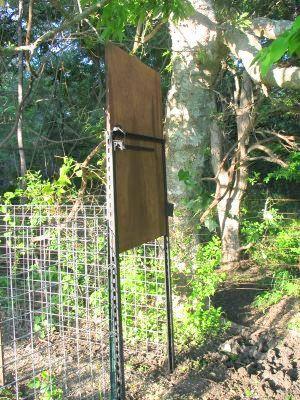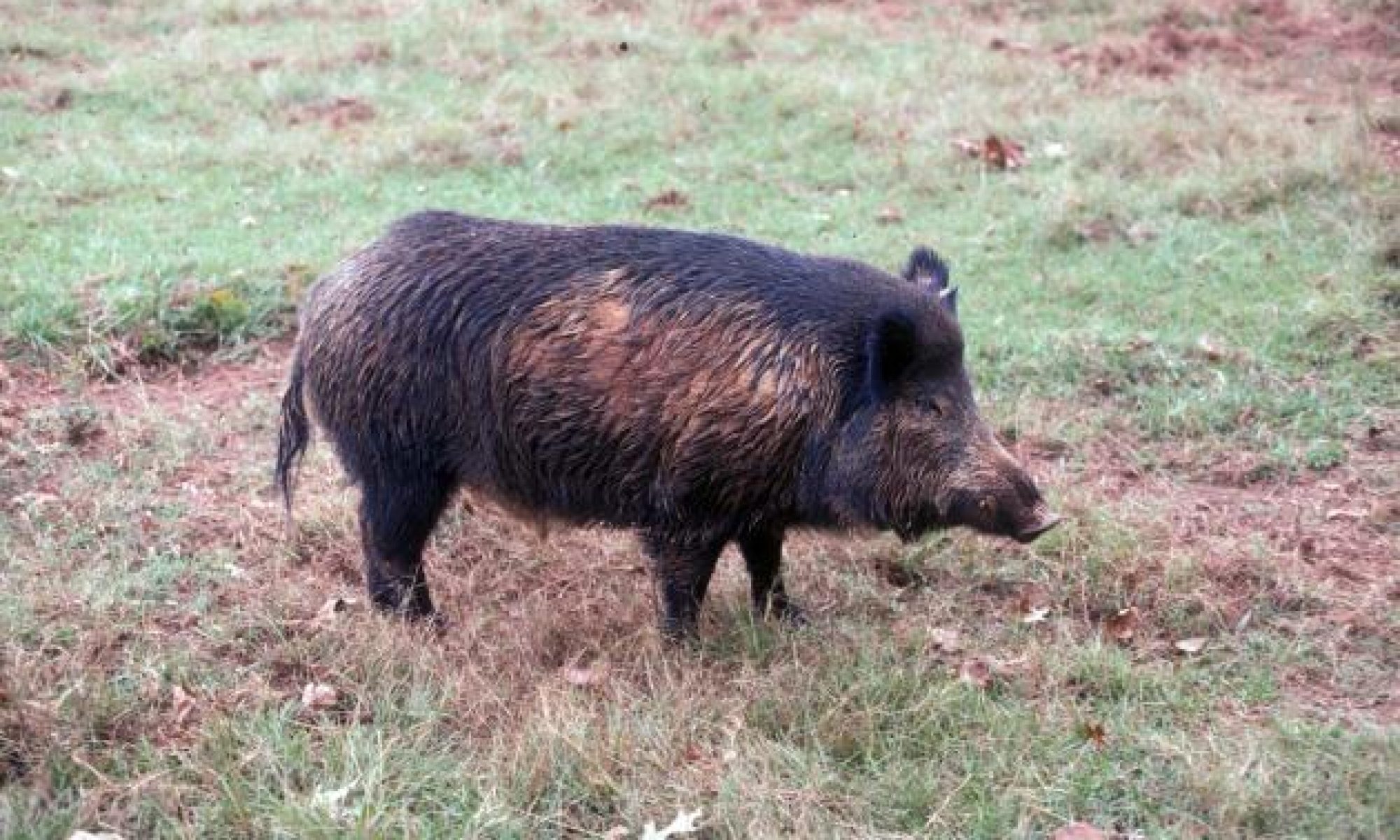The gate should be designed to prevent captured hogs from escaping through the trap entrance. Three gate designs are among those most commonly used for trapping feral hogs:

Figure 1. Guillotine (drop) head gate on corral trap. Photo courtesy of Texas AgriLife Extension
- Guillotine, or Sliding drop gates use a trip wire to trigger the door to fall. One drawback of guillotine gates is that they do not allow additional pigs to enter once the trap has been triggered.

Figure 2. Rooter (lifting) head gate on box trap. Photo courtesy of Texas AgriLife Extension
- Rooter (lifting) gates require that a hog use its nose to root or lift open the door. These gates have a top hinge that swings open as feral hogs push in.

Figure 3. Spring-loaded swing head gate. Photo courtesy of Jared Timmons, Texas AgriLife Extension
- Spring-loaded, swing gates use a heavy spring to close the door after the hog pushes its way into the trap.
Swing and lifting gates have the advantage of capturing additional feral hogs after the initial capture, because the first captured hog may serve as a lure to attract additional hogs. When used on corral traps entire sounders (groups) of feral hogs are capable of being captured at a time.
